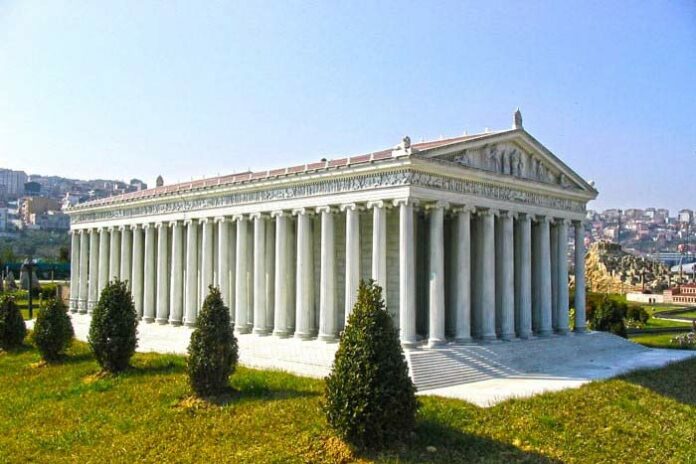Private Tour Ephesus – The Shrine to the Goddess Artemis
A private tour Ephesus lets you explore the ancient Shrine of the Goddess Artemis. The first shrine likely dates back to 800 B.C. It stood on a marshy strip near the river at Ephesus. The local Artemis, sometimes called Diana, differs from the Greek goddess. The Greek Artemis was a huntress, while Ephesus’s Artemis was a fertility goddess. She is often shown with multiple breasts or draped in eggs, symbols of fertility from waist to shoulders.
The earliest temple housed a sacred stone, probably a meteorite said to have “fallen from Jupiter.” The shrine faced destruction and reconstruction several times. By 600 B.C., Ephesus became a major trade port. An architect named Chersiphron designed a larger temple with tall stone columns. To avoid swampy ground problems, he rolled the columns on their sides to the site.

King Croesus and the Temple Rebuilt
This temple did not last long. Around 550 B.C., King Croesus of Lydia conquered Ephesus and destroyed the temple during battles. However, archaeological evidence suggests a major flood might have caused the damage. Croesus generously funded the next temple’s construction.
The next temple, designed by Theodorus, was huge — 300 feet long and 150 feet wide, four times bigger than its predecessor. Over 100 stone columns supported a massive roof. Several columns had bases carved with figures in relief. One such base is preserved at the British Museum.
Fire and Legend in Ephesus
During a private tour Ephesus, you learn about the temple’s tragic fire in 356 B.C. A man named Herostratus burned the wooden roof to gain fame. The citizens executed him and banned mentioning his name under penalty of death, as noted in the Ephesus daily tour.
Legend says the temple burned the night Alexander the Great was born. Artemis supposedly focused on Alexander’s birth and could not save her temple.

Private Tour Ephesus – Rebuilding the Great Temple
After the fire, a new temple was commissioned. Scopas of Paros, a famous sculptor, designed it. Ephesus had become a great city by then, so no expense was spared. Pliny the Elder, a Roman historian, praised the temple as a “wonderful monument of Grecian magnificence.”
The temple was rebuilt on the original wet site. Builders used layers of trodden charcoal and wool-covered fleeces to stabilize the ground. They believed the marshy location protected the temple from frequent earthquakes, a detail noted by our private tour guide Ephesus.
Marble and Masterpieces
The Great Temple was the first major building constructed entirely from marble. It had 36 columns carved with high-relief figures at their bases. The temple housed many artworks, including four bronze Amazon statues. According to myth, Amazons fled to Ephesus from Heracles and founded the city.
Pliny recorded the temple’s size as 425 feet long and 225 feet wide, with 127 columns about 60 feet tall. This dwarfed the Parthenon in Athens, which measured 230 by 100 feet with 58 columns.

Construction Stories and Divine Intervention
Construction took around 120 years. Alexander the Great visited in 333 B.C. and offered to fund the temple if credited as its builder. The city declined politely, saying, “It is not fitting that one god should build a temple for another god.” You can contact us for more about visiting the site.
Heavy stone beams were raised using earthen ramps. One beam over the door went crooked. The worried architect dreamed Artemis told him not to worry. The beam had settled into place by morning, a divine miracle.
Experience these stories yourself on a private tour Ephesus to see the incredible history come alive.




